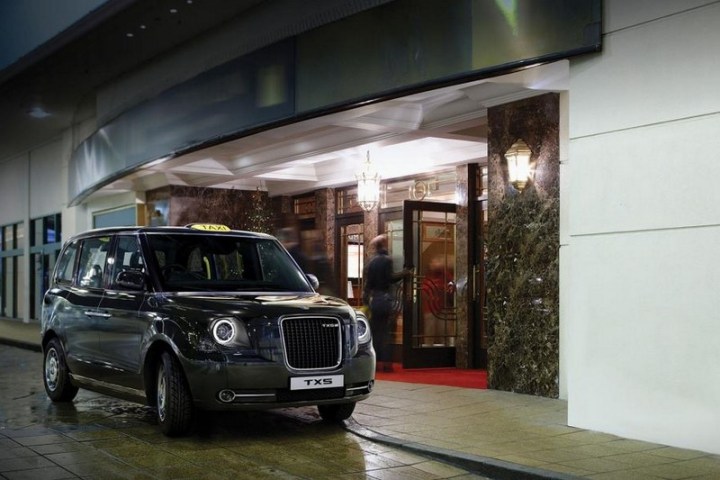
LTC is owned by Geely, a large, China-based auto-maker whose portfolio of brands also includes Sweden’s Volvo. Geely invested over 275 million pounds (roughly $347 million) to develop a state-of-the-art cab dubbed TX5 capable of fending off competition from much more modern passenger van built by the likes of Mercedes-Benz and Nissan.
The TX5 was designed from a blank sheet of paper. A gasoline-electric plug-in hybrid drivetrain represents one of the most noteworthy advancements over the outgoing TX4. Power is primarily provided by a three-cylinder engine, but the cab is capable of driving solely on electricity for over 70 miles. Hybrid technology will become mandatory for all taxi cabs operating in London starting next year, so the TX5 is ahead of the curve.
Penned in Barcelona by British designers, the TX5 borrows key styling cues such as a tall grille, round headlights, and a pronounced belt line from the Austin FX4 cab launched in 1958. The retro treatment is only skin-deep, however. The cab boasts composite body panels, as well as a modular aluminum platform that keeps weight in check. LTC believes the TX5 can earn a five-star crash test rating.
The TX5 will offer space for a driver, up to six passengers — one more than the current model — and a few suitcases. Accessed via suicide doors, the passenger compartment will be equipped with an in-car Wi-Fi connection, charging ports for mobile devices, and a tourist-friendly panoramic sunroof.
TX5s will roll out of a brand new factory that’s currently being built in England. The plant will initially have an annual capacity of 36,000 cars, a figure that far exceeds demand from taxi drivers in London. LTC wants to sell the TX5 around the globe, and officials predict the modular platform will ultimately underpin about seven models. One of them will be a commercial vehicle, LTC boss Chris Gubbey told British magazine Auto Express.
Don’t expect to get picked up by a TX5 if you fly into the Heathrow Airport in the coming months. The cab’s design has been finalized and engineers are fine-tuning the final prototypes, but production hasn’t started yet and the TX5 isn’t scheduled to hit the market late this year at the very earliest.
Updated on 02-01-2017 by Ronan Glon: Added up-to-date technical specifications, information about TX5 variants.



